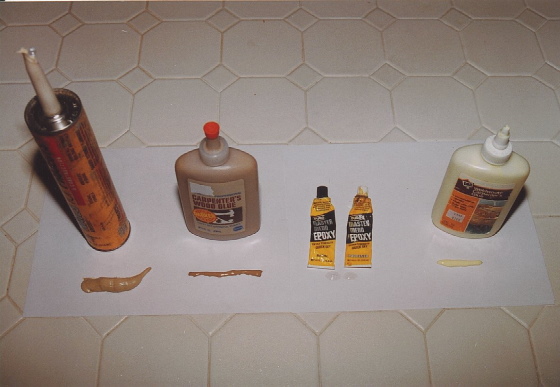Super Glue

Years ago, you only had a few choices when it came to adhesives. But as with many things, the variety is as varied as faces in a crowd. PHOTO CREDIT: Tim Carter
DEAR TIM: I recently visited a home center in search of some glue for a project. Once in the correct aisle, I was overwhelmed by the assortment of glues, adhesives, cements, and epoxies. Is there a multi-purpose glue that will work for virtually all projects or do I have to buy some of each to successfully glue objects in my home? Are there some really good waterproof glues available for bonding wood together? Do they still use old horses to make glue? Erin P., Boise, ID
DEAR ERIN: I can attest to your dilemma. There are many glues, adhesives,cements, and epoxies. Most, if not all of these products, are excellent when used correctly. Unfortunately, to the best of my knowledge, there is no one "wonder" glue that will work for all of your jobs. Different jobs and objects will require you to use different glues. However, there is one newer glue that is not only strong but will successfully bond, many, many things together. More on that in just a moment.
Glues and adhesives can be simple or complex with respect to makeup. Animal glues are still made today. These simple, yet effective, glues are often made from proteins found on the underside of animal hides. Bones, blood, and other animal byproducts such as milk can even be used. The adhesive experts seem to agree that the discovery of these glues was quite by accident. Early man probably saw how difficult it was to remove dried blood and skins from spears, knives, and other objects.
Most modern glues and adhesives are synthetic. They create a bond in one of two ways. Simple glues such as the white school glue and yellow carpenter's glue bond mechanically to objects. The glue itself actually flows into the pores of the object. This can be a nightmare for wood workers as excess glue can seal surface pores adjacent to a glued joint. The sealed visible wood pores will not accept wood stain! Avoid wiping excess glue from a joint. Let it dry and then sand it off. To minimize this problem, some glue manufacturers actually add small wood fibers to their yellow glues. These wood fibers readily accept the wood stains.
On a microscopic level, the mechanical bond can be very effective. In fact, these inexpensive glues can achieve strengths near 4,000 pounds per square (PSI) inch when used on wood species with a high density. Hard maple is one such wood. To achieve the best bond when using white or yellow glues, the objects being glued need to be very uniform, smooth, and dust free. If there are cracks or voids, the bond will be poor.
Clamping is also vital. Once you have pressed together the two objects being glued, they must be clamped tightly for a period of time. Different glues and adhesives have different clamp times. Failure to clamp the objects will result in a weakened bond.
Other glues rely on specific adhesion bonding. These adhesives react chemically with the object they stick to. Examples of these adhesives are many epoxies. Epoxies are not only very strong, but they are also very selective. You often need special formulations and types to bond certain objects.
The newer urethane glues are quite interesting. They are actually activated by moisture. You can often use these glues on lumber that has up to a 25 percent moisture content. These glues actually foam and expand as they cure. This expansion property helps to fill small voids between the objects being glued. The newer polyurethane glues mechanically bond to masonry, glass, wood, metal, and many plastics. Once dry the urethane glues are highly water resistant. Some are completely waterproof. These glues are probably the most versatile ones you will find. By it in smaller bottles as it can actually set up within the bottle. As you use the glue, the bottle fills with air. Moisture in the air can react with the remaining glue and cause it to spoil.
Construction adhesives in a tube are formulated to bond poorly fitting materials. These glues can easily bridge gaps. However, these adhesives are generally not as strong as the others. They only will achieve 600 PSI strengths. These adhesives are for rough work where clamping is often difficult. They are also very water resistant.
To achieve the best results when using glues, always read the instructions on the label. Follow directions to the letter. It is always preferable to test the glues first before using them. I know this will take you an extra day or so, but it will be worth it!
Related Articles: Gorilla Glue, Wood Glue